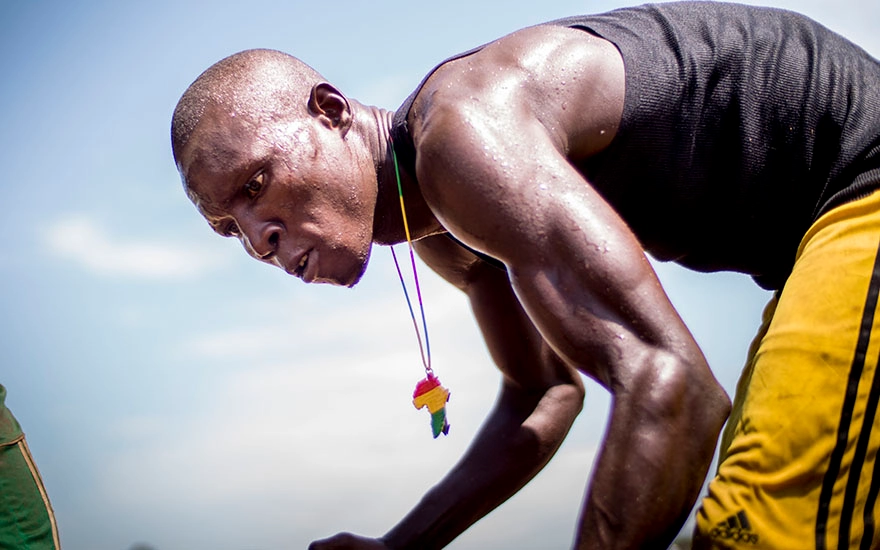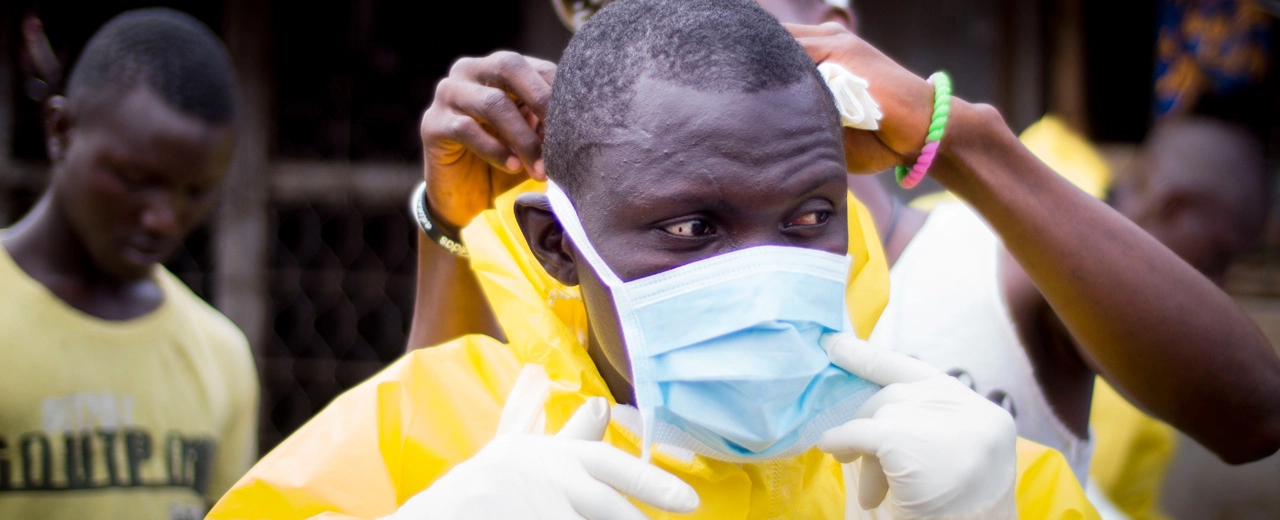The most lethal Ebola outbreak in history struck hard in Sierra Leone and Liberia, two countries where Concern has had a longstanding history. We shifted focus to respond to the epidemic, block the spread of the virus, and then help battered health and education systems recover.
In March 2014, a case of Ebola was confirmed in the West African country of Guinea. From there, the disease spread to Liberia, Sierra Leone, Nigeria, and Senegal. A separate outbreak was also recorded in the Democratic Republic of Congo. By 2016, this outbreak became an epidemic. As of May 8, 2016, the WHO estimated a total of 28,646 cases and 11,323 deaths. A global health emergency, the outbreak officially ended on June 9, 2016.
Concern had been working in the two countries hardest hit by the outbreak — Sierra Leone and Liberia — for over 20 years. Already on the ground, we were one of the first NGOs to respond to the crisis. We immediately began with existing resources to help fight the spread of the disease.
Update: April 2020
As the COVID-19 pandemic threatens to hit hardest in the vulnerable communities where Concern works, we're applying some of the same principles that guided our 2014-16 Ebola response to supporting the prevention and recovery of the Novel Coronavirus. Learn more about how we're helping to save lives — and maintain progress in the fight against poverty — in the countries where we work. »
You can also support our ongoing work to keep communities healthy and safe.
Our impact
An epidemic is never just a medical crisis. The efforts put towards curbing and treating the outbreak mean that other areas of life are affected. In addition to supporting medical teams with supplies and trainings, our work included:
- Over 17,000 safe and dignified burials in Sierra Leone
- Burial workers were supported to reintegrate into their communities
- Water, Sanitation and Hygiene (WASH) facilities helped with infection protection and control through upgraded latrines and showers
- Recovery food for quarantined households meant that citizens were sustained through difficult periods with diminished resources
- Seeds and tools were distributed to improve food security among households
- Business Groups enabled a number of individuals to restart their small businesses post-outbreak
- Youth vocational training supported 100 individuals to learn a vocation
How the world’s deadliest Ebola outbreak started
On December 28, 2013, a two-year–old Guinean boy, Emile Ouamouno, died of haemorrhagic fever. His mother, sister, and grandmother all died shortly afterwards. Mourners and a healthcare worker picked up the virus, which was confirmed in March of 2014 as Ebola, and it began its spread across Western Africa.
Sierra Leonean health authorities estimated that 365 Ebola-related deaths were the result of one funeral.
Patients in Guinea looked to Mendinor, a Sierra Leonean traditional healer who was well known in neighboring countries. According to the World Health Organization, Mendinor’s subsequent infection and death resulting from her work with early patients meant that hundreds of mourners attended her funeral. This, combined with unsafe traditional burial practices given the highly contagious nature of Ebola, resulted in the virus spreading even further. Sierra Leonean health authorities estimated that 365 Ebola-related deaths were the result of that one funeral. A study published in the journal Science confirmed that this funeral was a “seminal event” at the onset of this outbreak. It also led to the virus spreading to neighboring Liberia.
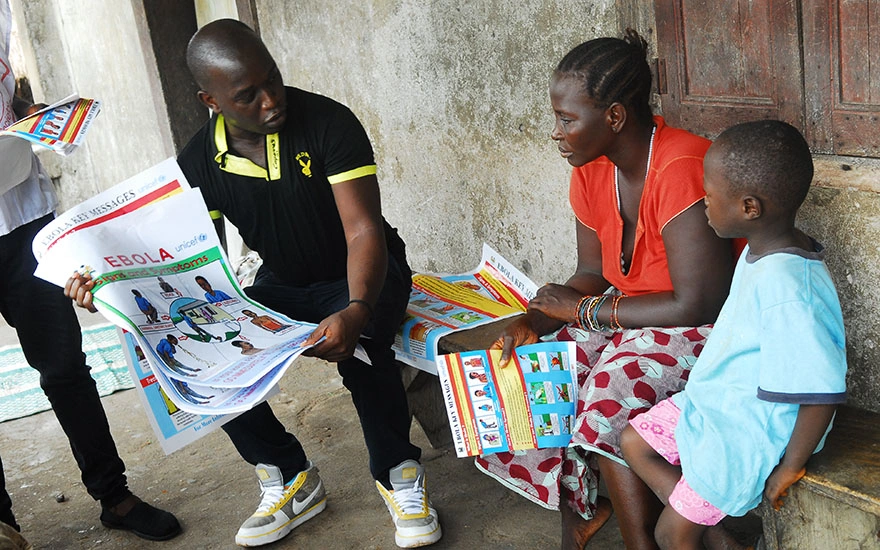
An outbreak becomes an epidemic
Ebola wasn’t “discovered” in 2014. Its origins were traced back to 1976 with two simultaneous outbreaks in what is now the Democratic Republic of Congo (near the Ebola River) and South Sudan.
However, with this outbreak, scientists found that the virus was rapidly mutating, changing and adapting to medical treatments. Given how quickly it mutated in this outbreak, finding an effective cure or treatment would be nearly impossible. Those who were helping to curb the spread of Ebola were also at high risk for contagion. Many (including some of the scientists researching the disease) died from the virus themselves, leaving resources scarce.
Additionally, rampant fear and distrust of health authorities and governments allowed numerous myths and conspiracy theories around Ebola to spread. Those diagnosed with the disease would flee isolation wards, thereby spreading the disease. In 2014, Concern Worldwide Sierra Leone Country Director Fiona McLysaght wrote that transmission through contact with an infected person’s blood or other bodily fluid, “is not the only way the disease is transferred from one person to another. In no small part, Ebola is also transmitted directly through myth and fear.”
"In no small part, Ebola is also transmitted directly through myth and fear." — Fiona McLysaght, Concern Worldwide Sierra Leone Country Director
By May of 2014, the hospital in Sierra Leone’s second-largest city of Kenema was overrun with too many patients and not enough safety measures. Six months into the outbreak, WHO expressed concern that the virus may “establish permanent residence in the affected areas.”
In August 2014, after the outbreak reached Nigeria, the organization declared an international emergency.
A turning point
By the beginning of 2015, Concern was mobilized in Liberia and Sierra Leone, two of the countries hit hardest by the epidemic. Here, and in Guinea, the number of new cases began to drop at around the same time. This was due in large part to increased medical response and a focus on safe burials once it was discovered that Ebola was spreading during contact with the dead as part of traditional funeral rites. By this point, nearly 9,000 Ebola deaths were confirmed across West Africa.
By May 2015, Liberia was declared Ebola-free for the first time — it would subsequently see three small outbreaks before being declared Ebola-free for the fourth and final time over one year later in June 2016.
With ongoing relief efforts from Ebola responders, the epidemic was declared officially over in January 2016, just over a year from the initial case. Over 11,000 victims were buried.
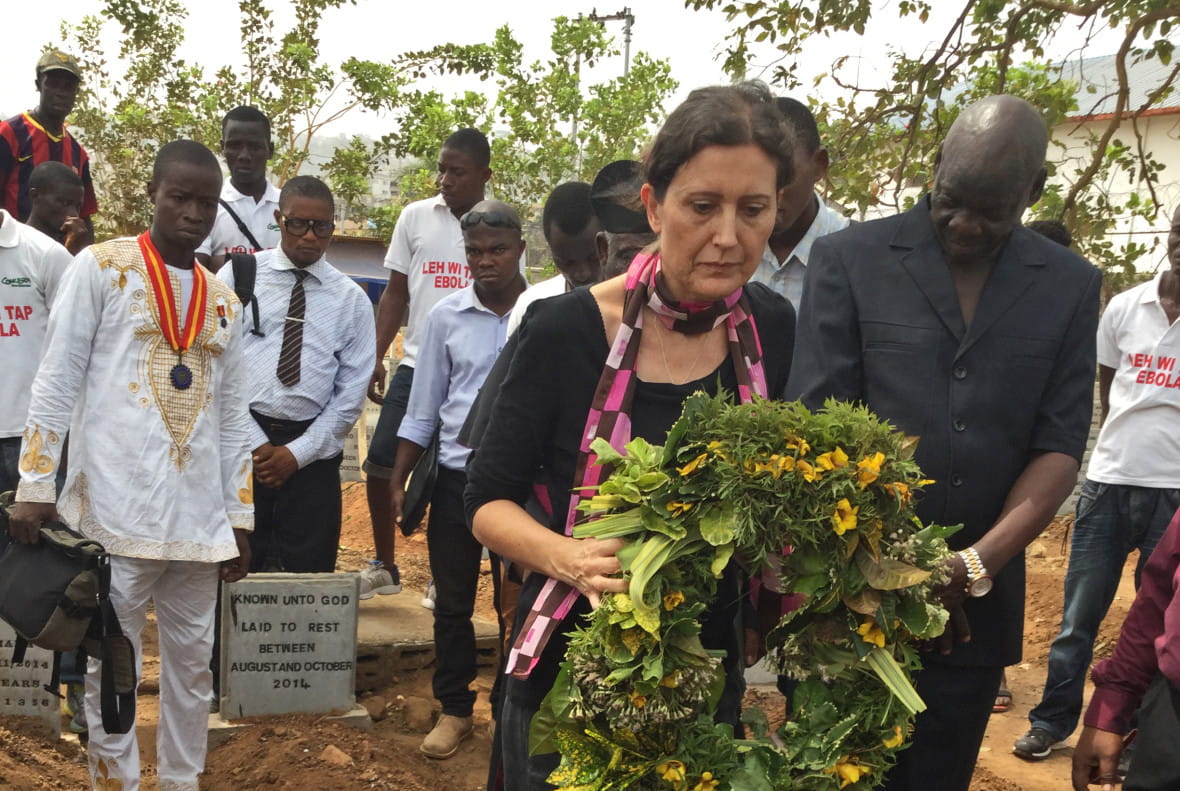
Concern’s Response
Supporting local health systems
In an epidemic, effective medical response doesn’t just need doctors: It also requires supplies, logistics, and funding. At the height of the crisis, many health clinics lacked even the most basic necessities.
Concern supported health centers with essential protective equipment including aprons, gloves, and masks. We donated vehicles to burial teams, and serviced ambulances. In Freetown, Sierra Leone, we also supported the Ebola command center, which received calls about new cases and deaths. In these instances, we dispatched ambulances and burial teams.
The Ebola outbreak also created a widespread fear of health facilities, resulting in a dramatic falloff in use, and a rise in the incidence of preventable illnesses including typhoid and malaria. In these cases, we continued our community health support wherever possible through hygiene promotion, the provision of clean water, and construction of latrines.
Through our Innovations program, we also trained more than 200 traditional birth attendants on Ebola so they could continue their work as an important resource for expecting mothers.
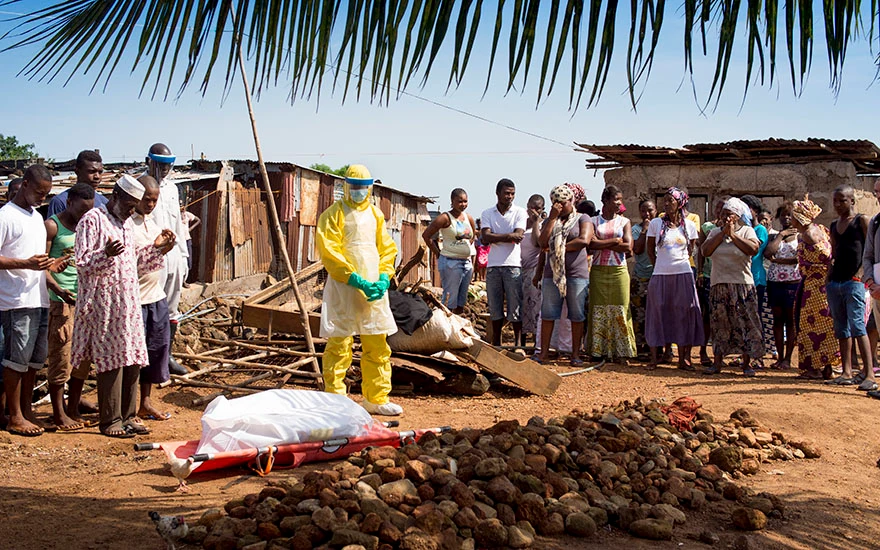
Safe and dignified burials
In October 2015, we were asked by the National Ebola Response Centre in Sierra Leone to take over management of medical burials of all deceased in the Western Area District of the country, which includes the capital Freetown. This was previously uncharted territory for us and yet, three days after the request we were operational and had dug over 70 graves.
When Freetown was named a high transmission zone, the government required that all bodies, regardless of the cause of death, be buried using specific procedures that prevent the spread of Ebola. Concern began supporting a network of burial teams that included nearly 300 people. This required that bodies be retrieved from homes by trained burial teams wearing full protective gear, and those bodies interred in body bags in designated cemeteries.
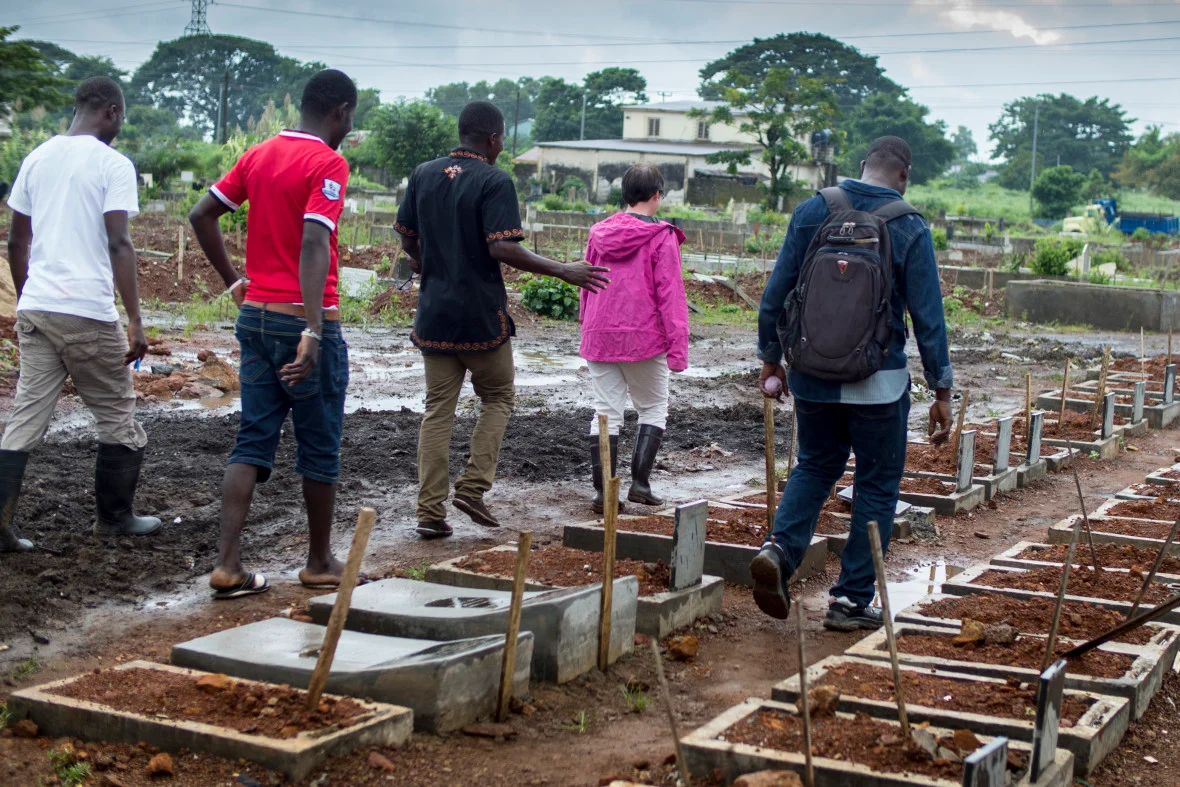
Existing cemeteries were already beyond capacity so Concern began rehabilitating the then-disused Kingtom Cemetery. Huge earthworks were undertaken. A system was put in place to ensure all graves were marked and recorded. Small ceremonies with a few family members were once again allowed at the graveside. Bit by bit, we won back the community’s trust and helped to safely bury over 17,000 bodies. At the peak of the Ebola outbreak, Concern’s burials teams were burying an average of 450 bodies per week.
Fiona McLysaght, Sierra Leone County Director for Concern Worldwide, said at the handover ceremony that the “safe and dignified” burial policy had played a key role in halting the spread of the disease in the country. Sheena McCann, who oversaw the burial management program, added that dignity and respect were foundational principles of Concern Worldwide. “The cemetery will be the physical legacy of our work, and everyone’s work,” she said.
Public education
While no proven cure or vaccine exists, Ebola transmission can be largely prevented by taking simple safety precautions. Facing an enormous amount of myth, fear, and misinformation, we gave people the facts they needed to keep themselves safe. We distributed information via posters, leaflets, and radio, and we trained journalists about the media’s role in public education. Our teams also worked to provide health care workers, community health volunteers, traditional birth attendants, village leaders, and traditional leaders with knowledge and equipment.
Ebola also forced schools in Sierra Leone and Liberia to close, putting the education of 3 million children in those countries on hold. Concern worked with the governments of both countries to deliver lessons by radio. This included designing child-friendly radio messages on Ebola and an engaging audio curriculum, as well as distributing thousands of radios. We also trained community members to work with small groups of children on basic reading and math, and got books, stationery, and other learning materials out to families. As schools reopened, we shifted our focus to help children get back into classrooms safety.

Concern remains committed to the people of West Africa. We will continue to work to strengthen the health system and, most importantly, engage and empower communities to help themselves.

